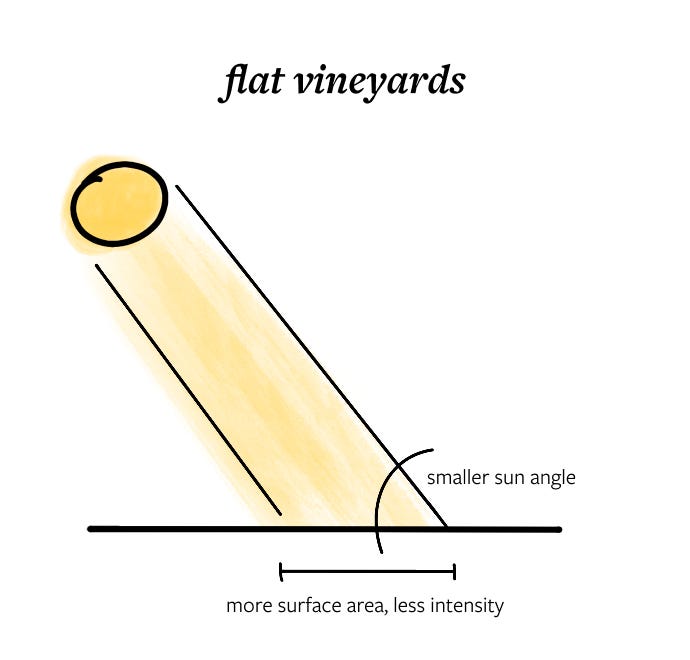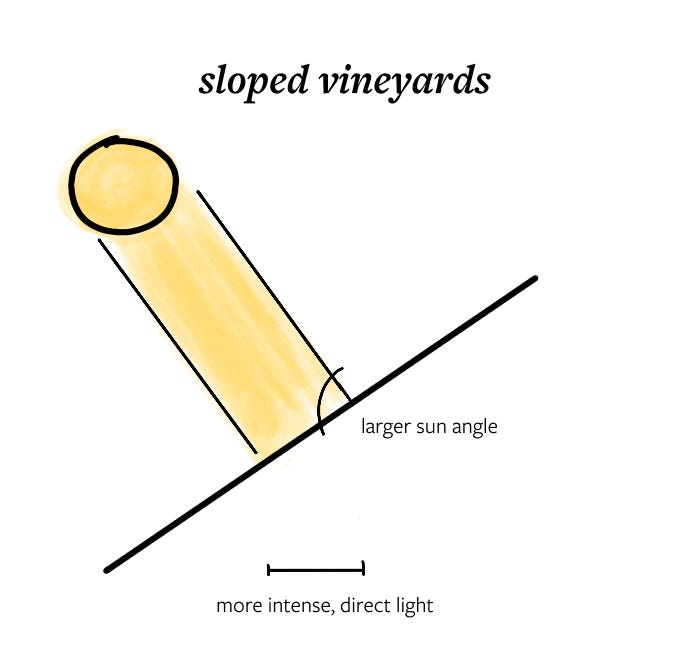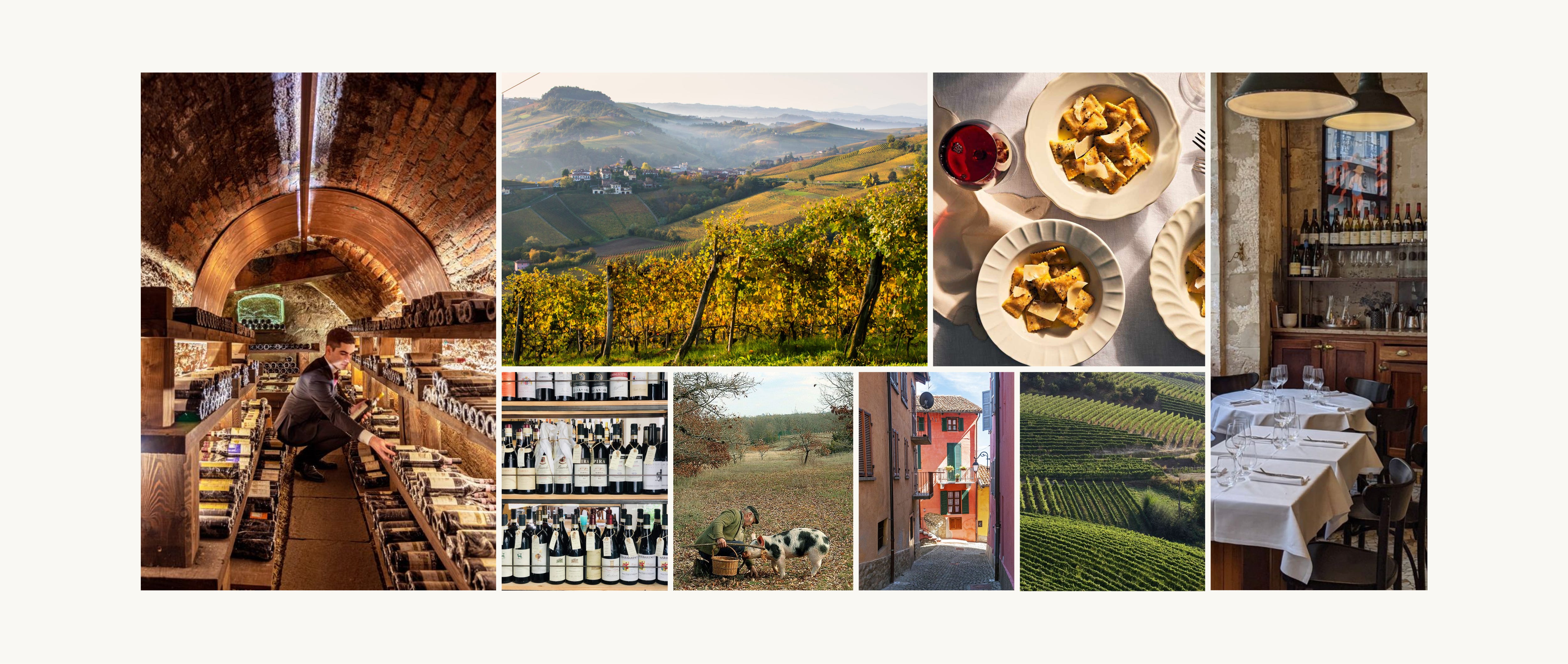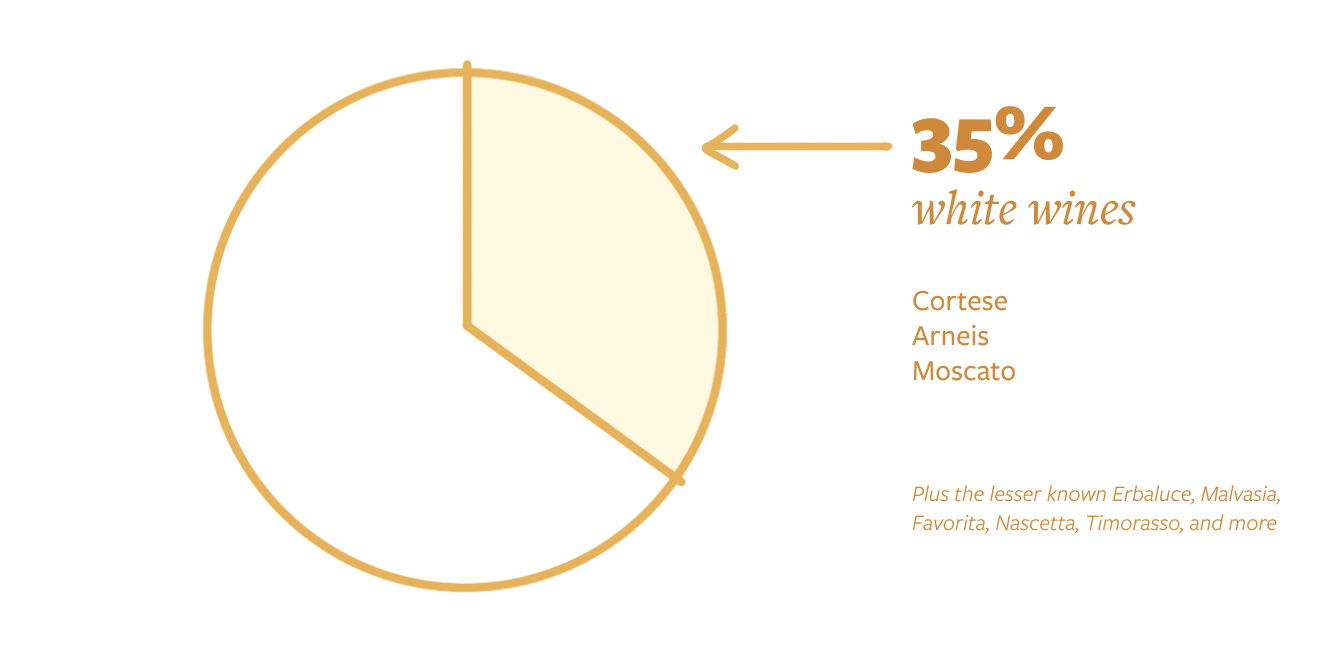Classic Wine Regions: Piedmont
🇮🇹 Why this region is so iconic, plus my vacation mood board, some sketches and all the northern Italian wines you should be drinking
I originally fell in love with the world of wine through my love of traveling. Exploring esoteric wine regions, meeting small producers, and trying wines that were challenging (if not impossible) to find in the US. Over the years, I have had the chance to visit some amazing, off-the-beaten path regions, expanding my appreciation for some very niche wines. And this continues to be what fascinates me about wine today.
But, at the same time, I feel like I skipped an important step — jumping straight into the fringes before learning the “classics” like Burgundy, Champagne, or Napa Valley. These regions are household names for a reason and I’m excited to explore them in depth — brining you along for the ride, of course.
My goal is to study a new wine region each….month? (is that moo much? what I am committing to here?). I’ll sort through all the info to find the interesting nuggets, the fun facts and the wines you should be drinking — maybe even a local food pairing that you can’t miss. And maybe some fun sketches, graphics, travel inspo, and hand drawn maps along the way.
You in? Ok good. Then get started with…..Piedmont
Where is it?
Piedmont is located in the Northwestern corner of Italy, bordering France and Switzerland. The name ‘Piemonte’ —the Italian name for the region — actually translates as “foot of the mountains”, referencing its location surrounded by the Alps to the north and west and the Apennines to the south. Famous for it’s rolling hillsides (less than 5% of the region is “flat”) and complex soil types, this region is often compared to Burgundy for it’s high quality, terroir driven wines.
Geography and climate
The region has a continental climate with long, hot summers, a quick transition into a cool fall and cold winter, and a cool, often rainy spring. The mountains provide protection from the harsh winds and steep slopes to grow vines.
Steep slopes help to maximize sunlight to the grapes. In cold climates, this is critical, especially for late-ripening varietals like Nebbiolo.


Known for the morning mists and thick fog in the region, the Nebbiolo grape get’s its name from ‘nebbia’, the Italian word for fog. This microclimate is perfect for Nebbiolo — the fog helps to prolong it’s ripening season, creating aromatic wines that are high in acid, alcohol, and tannins (the holy trinity of wines with excellent aging potential!).

Why is it famous
Piedmont is synonymous with quality wines — producing more DOCG wine by volume than any other Italian wine region (nearly 84%). Unlike the rest of Italy, this region does not allow production of Indicazione Geografica Tipica (IGT) wine but instead boasts 42 DOC regions, and 17 DOCGs. And while Piemontese wine makes up only 5 percent of Italy’s national production, it makes up nearly 18 percent of the country’s total exports.
But, like most things in Italy, this has resulted in a highly regulated, dizzyingly complex and layered map of wine regions. Based on my research it’s seemingly impossible to depict the overlapping and nuanced web of DOC and DOCG regions on a single map. It reminds me of an Italian term I read about recently, ‘furbizia’, used to describe cunning and “creative” rule bending. The perfect summation of the stereotypical Italian, looking for every loophole the can find. But I digress….
DOC = Denominazione di Origine Controllata
There are 42 DOCs in Piedmont.
DOCG = Denominazione di Origine Controllata e Garantita
These wines must pass an in-depth laboratory analysis and panel tasting to guarantee their quality. Piedmont boasts 17 DOCGs.
Ok let’s talk grapes
Unlike many wine regions that have gained a following by producing wines from well known international varietals like Pinot Noir or Chardonnay, Piedmont has been hugely successful in growing indigenous varietals — so much so that you have likely heard of many (or at least some!) of these grapes. Nebbiolo is 👑 king 👑 but there are plenty of other grapes worth seeking out. Starting with the red grapes:
Nebbiolo
This is a finicky variety that needs particular conditions to thrive — winemakers have tried planting Nebbiolo all over but it’s notoriously tricky to grow outside of Piedmont. It tends to bud early but ripens late, even on the sunniest south-facing slopes.
Nebbiolo typically has notes of red and black fruit, violet, rose, mushroom, tar, leather, and spice. The high acidity and tannins make it a great match for rich foods - a staple in Northern Italian cuisine. Top regions for Nebbiolo:
Barolo and Barbaresco are the most famous regions for Nebbiolo — often considered some of the highest quality wines in all of Italy. These wines are incredibly complex and aromatic and have crazy aging potential (high acidity, high tannin, and high alcohol is the trifecta of age worth wines). Good vintages are considered at their “peak” between 10-40 years old! Barbarescos are lighter typically slightly in body than Barolos, with less concentrated fruit flavors. But both are incredibly bold, elegant wines. We are talking subtle differences here!
Roero is located right between Barolo and Barbaresco but somehow continues to fly under the radar, even though it was elevated to DOCG status back in 2004. This is an incredible region to check out if you want to try some quality Nebbiolo at a fraction of the price that Barolo demands.
Nebbiolo d’Alba is produced in the region surrounding Alba, near the top DOCG regions. This means that vineyards in this region are often positioned in the lower hills or on North-facing plots, making it more challenging to reliably ripen Nebbiolo. But this is still a great region to hunt for value wines, especially with global warming impacting wine production.
Langhe is the larger region that overlaps and extends beyond the top tier DOCG regions, producing many value-driven wines including Nebbiolo. Look for wines specifically labeled ‘Langhe Nebbiolo’ which requires that the wine be at least 85% Nebbiolo (typically blended with other local varietals like Barbera) Because the region is much larger and gives winemakers more flexibility, expect more variety in the styles of wines. But generally some great value everyday wines.
La Ca Nova Barbaresco ($40)
Mauro Sebaste Nebbiolo d'Alba Parigi ($30)
Azienda Agricola Lalu Langhe Nebbiolo ($40)
Stefano Occhetti Langhe Nebbiolo, Roero ($35)
Barbera
Outside of Nebbiolo, Barbera is easily the most famous Piedmontese grape. It ripens earlier than Nebbiolo making it the perfect grape to grow on the “less desirable” sites in the region (anything low elevation and north facing). With higher acidity and low tannins, Barbera is incredibly easy to drink. It’s got a great mix of red and black fruit flavors — cherries, blackberries, and strawberries — with some spiced notes. It’s my go-to choice with pizza and anything with mushrooms or spice. Look out for Barberas labeled as Barbera d’Asti and Monferrato.
Barbera d'Alba, Filippo Gallino ($15)
Vietti Barbera d'Asti Tre Vigne ($19)
Giuseppe Mascarello e Figlio Scudetto Barbera d'Alba Superiore ($54)
Dolcetto
Translating to something like ‘little sweet one’ in Italian, Dolcetto, is fruity, low in acid but high in tannins. Dogliani and Diano d’Alba are two of the top spots for these wines.
Dolcetto d'Alba Superiore, Gigi Bianco ($25)
Poderi Cellario Langhe Dolcetto 'Duzat' ($20)
White wines
Cortese
Mostly known by it’s regional name, Gavi, Cortese produces light, refreshing white wines with notes of apple, peach, melon, lime, almond and sweet grass. Their high acidity makes these wines a perfect companion for most foods, especially seafood, shellfish, and pesto. Look for bottles labeled as Cortese di Gavi DOCG, or just Gavi DOCG.
Villa Sparina Gavi ($18)
Rocca Felice Gavi ($23)
La Scolca Black Label, Gavi di Gavi ($42) ← This is some top quality Gavi!!
Arneis
This aromatic variety is known as “the little rascal” because it’s a tricky grape to cultivate. Historically, it was used in Nebbiolo based wines to help mellow out the aggressive tannins. And reportedly planted in the vineyards as a distraction to hungry birds? But without a large market for Arneis, this grape nearly went extinct but has seen a resurgence more recently. In single varietal wines, Arneis tastes like ripe pear, peach, apricot, and almonds. Roero DOCG is the main producer here, making some incredibly high quality wines that Piedmont’s major source of the grape.
Cascina Chicco Arneis Cru Anterisio ($23)
Filippo Gallino Roero Arneis ($20)
Fletcher Wines 'Arcato' Bianco ($34)
Moscato
Referred to as Muscat in other regions, Moscato is typically associated with overly sweet, not particularly complex sparkling wines…you know, the low brow stuff. At least that’s how I used to think of it.
Asti is a DOCG region that produces two distinct styles of effervescent wine, both made entirely from the Moscato grape — Asti DOCG (formerly known as Asti Spumante) and Moscato d’Asti DOCG.
Asti wines are less sweet, higher in alcohol and carbonation than Moscato d’Asti. Because of the extra carbonation, these are almost always bottled in a traditional sparkling bottle with a large cork and cage. If you have written off these wines, you should give Asti another shot — with the limestone-heavy soils in this region, these wines can be light, refreshing and intensely mineral.
Vietti Moscato d'Asti ($16)
Rivata Asti ($15)
Ok friends, that’s all for now. Should we do a part 2 with an intro to the less common, under the radar Piedmont wines next week? Let me know what you think!
As always, thank you so much for reading (and subscribing!). Hope you learned something new and maybe even have some ideas of what wines you want to try next. If you enjoyed reading this, consider forwarding this to a friend or giving it a quick like….any support means a lot.
I would love to know what regions you want to learn about next! Drop a comment below with any requests 🗺️











